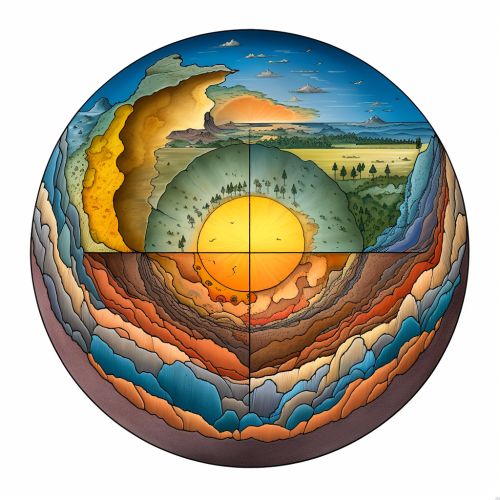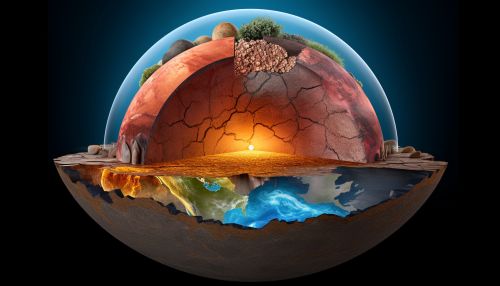Mechanisms of Tectonic Plate Movement
Introduction
Tectonic plate movement, also known as plate tectonics, is the scientific theory that explains the movement and interaction of the Earth's lithosphere. This theory, developed in the mid-20th century, revolutionized the earth sciences by providing a uniform context for understanding mountain-building processes, volcanoes, and earthquakes as well as the evolution of Earth's surface and reconstructing its past continents and oceans.


The Structure of the Earth
The Earth is composed of several layers, each with unique properties. The outermost layer is the lithosphere, a rigid shell that includes the crust and the uppermost part of the mantle. Beneath the lithosphere is the asthenosphere, a more ductile region of the mantle where the tectonic plates move. The asthenosphere is followed by the lower mantle, and finally, the core, which is divided into the outer core and the inner core.
Tectonic Plates
The lithosphere is divided into several large and small slabs known as tectonic plates. These plates are not fixed but are constantly moving at a slow pace. The Earth's surface is made up of seven major plates: the African, Antarctic, Eurasian, North American, South American, India-Australian, and the Pacific plates. There are also many minor plates such as the Arabian, Nazca, and Philippine Sea plates.
Mechanisms of Tectonic Plate Movement
The movement of tectonic plates is primarily driven by two forces: ridge push and slab pull.
Ridge Push
Ridge push is a gravity-driven force that causes a plate to move away from the mid-ocean ridge. It is thought to be the dominant force in the movement of plates that are not subducting.
Slab Pull
Slab pull is the force that a subducting, or sinking, plate exerts on the rest of the plate. This force is considered to be the primary force driving plate motion and is caused by the weight of the subducting plate pulling the trailing lithosphere into the subduction zone.
Plate Boundaries
Tectonic plates interact at three types of plate boundaries: convergent, divergent, and transform. Each boundary has a distinct set of geological characteristics.
Convergent Boundaries
At convergent boundaries, two plates come together, or converge. When two plates with oceanic lithosphere converge, the denser plate subducts beneath the less dense plate, forming a trench and potentially leading to volcanic activity. When oceanic and continental lithospheres converge, the denser oceanic plate subducts beneath the continental plate, leading to the formation of a chain of volcanoes known as a volcanic arc. When two continental plates converge, they collide and can form mountain ranges, such as the Himalayas.
Divergent Boundaries
At divergent boundaries, two plates move apart, or diverge. This occurs primarily along oceanic ridges and results in seafloor spreading, which is the process by which new oceanic crust is formed by the upwelling of magma at mid-ocean ridges and its subsequent outward movement on either side.
Transform Boundaries
At transform boundaries, two plates slide past each other horizontally. These boundaries are characterized by conservative plate motion, meaning that the lithosphere is neither created nor destroyed. The San Andreas Fault in California is an example of a transform boundary.
Effects of Tectonic Plate Movement
The movement of tectonic plates has a significant impact on the Earth's surface and is responsible for several geological events and phenomena. These include earthquakes, volcanic activity, the creation of mountain ranges, and the formation of oceanic trenches.
Earthquakes
Earthquakes occur when the stress accumulated in the rocks at the edges of tectonic plates is released. This release of energy causes the ground to shake, often resulting in significant damage to human-made structures and loss of life.
Volcanic Activity
Volcanic activity is often associated with convergent and divergent plate boundaries. At convergent boundaries, the subduction of one plate beneath another can lead to the formation of a volcanic arc. At divergent boundaries, the upwelling of magma can lead to the formation of new crust and volcanic activity.
Mountain Building
The collision of two continental plates at a convergent boundary can lead to the formation of mountain ranges. The process of mountain building, known as orogeny, involves a variety of mechanisms, including the folding and faulting of rock layers, the intrusion of magma, and the metamorphism of rocks.
Oceanic Trenches
Oceanic trenches are formed at convergent boundaries where one tectonic plate subducts beneath another. These deep underwater canyons are the deepest parts of the world's oceans.
